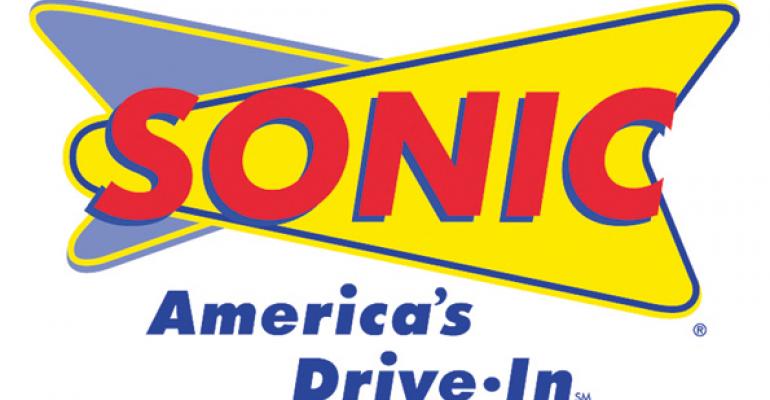Promotions of new products like pretzel-bun hotdogs and summertime shakes helped propel Sonic Corp.’s sales higher in its fourth quarter, the company said Monday.
Same-store sales in the 3,500-unit system rose 5.9 percent in the Aug. 31-ended fourth quarter, which J. Clifford Hudson, Sonic’s chairman, chief executive and president, told analysts was also a credit to the brand’s effective use of marketing, such as the return of the brand’s signature “Two Guys” television advertising.
The results matched the preliminary estimates the company released on Sept. 12. Executives said at the time that the company performed better than expected during the quarter.
RELATED
• Sonic 4Q profit drops nearly 16%
• Sonic names chief development and strategy officer
• More quick-service restaurant news
Hudson said he sees the sales strength continuing. “We have a lot of new products across these dayparts, prospectively, a lot of things in test for 12 and 24 months looking out, a lot of new product across day-parts, in test,” he said.
Analyst Andrew Slagle of Jeffries agreed that Sonic could continue to produce strong sales numbers. “We think all key underlying drivers in the business are firing on all cylinders (media strategy, creative, better service, new product news) and are capable of maintaining [same-store sales] in the 3-percent range,” he wrote in a note.
Sonic’s successful “Summer of Shakes” promotion did contribute to some higher food costs in the quarter, which executives said could be limited in the future. The promotion featured 25 shake flavors and half-price shakes after 8 p.m.
“This promotion was very effective at driving traffic across our day-parts, and our premium shake flavors have been particularly popular,” said Stephen C. Vaughan, Sonic’s chief financial officer and executive vice president.
“When we introduced the Summer of Shakes and the 25 flavors, we charged the same price across all of our shakes,” he explained. “And we've done some testing and some additional research on that and actually believe there is an opportunity to have an upcharge for those premium flavors, and so that is what you'll see more of going forward.”
Sonic also plans to increase its franchise development, and Hudson said a smaller prototype it has developed would be helpful in that.
The smaller unit reduces building costs between 15 percent and 20 percent and allows for smaller parcels of land as well, he said.
“This is really a nice contributor to the fact that our pipeline is starting to pick up, including with any new franchisees,” Hudson said. “As a matter of fact, we've seen on a same-store basis, same small town, this new store was actually seeing service times drop and throughput capacity improve.”
Oklahoma City, Okla.-based Sonic reported a 15.9-percent drop in fourth-quarter profit, based on one-time charges, to $12.2 million from $14.5 million in the same quarter last year. But its revenue rose 5.2 percent, to $158.8 million from $150.9 million in the same period last year.
The company took one-time charges in the quarter of $3.9 million linked to debt refinancing and a $2.4-million write-down related to closing 12 underperforming restaurants. It also booked a $1.6 million impairment charge to write down assets associated with switching vendors for a new point-of-sale system.
Contact Ron Ruggless at [email protected].
Follow him on Twitter: @RonRuggless





